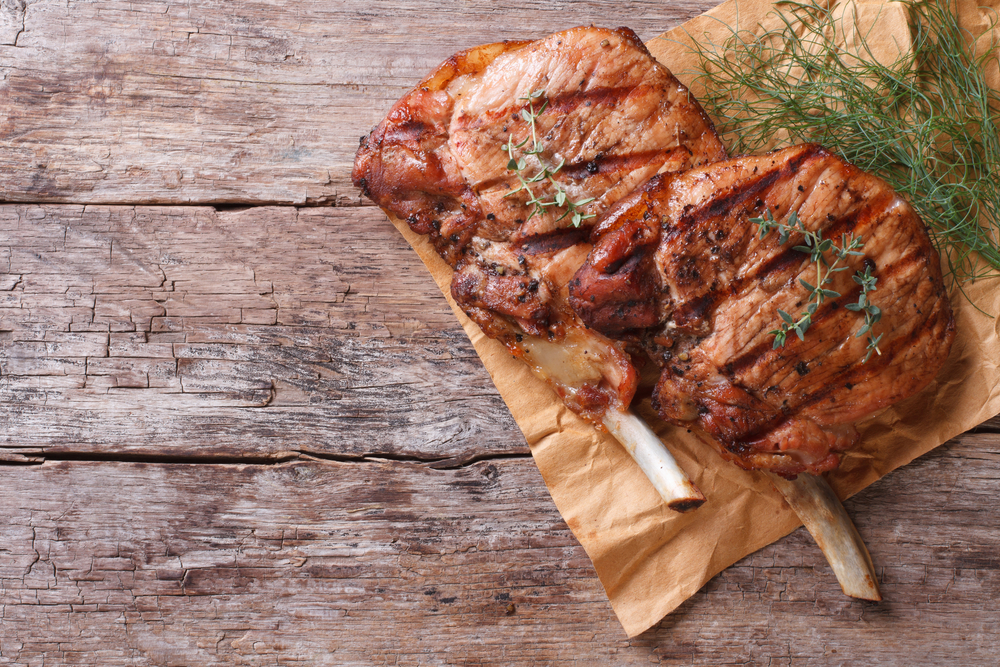This Week in Retail: Looking Ahead to October
Friday, 01 October 2021October 1, 2021

Don’t blink—it’s nearly October. Corn and soybean harvests are underway, sweater weather is approaching, and grocers are seeing additional opportunities to promote protein sales. Pork and seafood are receiving special accolades next month, as October is recognized as National Pork and Seafood Month.
Both campaigns are aimed at supporting farmers and encouraging household consumption by showcasing creative ways to incorporate pork and seafood into mealtimes. Whether it's for back-to-school lunches or family-time dinners, there are no shortages of pork and seafood-centric recipes to celebrate October and fall time festivities.
Traditionally, hogs were marketed in October. These days, specialized facilities allow for year-round production. While every month is pork month for producers, National Pork Month focuses on connecting farmers to consumers through attractive promotions at retail. Furthermore, grocers will look to actively promote pork items in the weeks ahead since more inventory is coming online.
Hog supplies are undergoing expansion, typical for this time of year, while daily weight gains are increasing due to the arrival of cooler temperatures. This spells more pork output—can demand keep up? For now, sharply higher YoY cutout values suggest that demand remains solid overall. Urner Barry’s cutout was quoted at $109.71/cwt Wednesday afternoon, up 16.4% from a year ago and nearly 34% above the prior five-year average.
Historically, October marks the largest pork production period of the year. USDA federally inspected pork production in October averaged 2,420.5 million pounds over the last 5 years. With cold storage inventories remaining tight and USDA data showing overall inventory numbers at nearly 4% under last year, consumers could continue to pay up for many of their favorite pork items in the near term. In addition to domestic demand, traders are closely eyeing global demand for U.S. pork. According to ERS/USDA data, the U.S. has exported 4.3 billion pounds of pork so far this year, down slightly from 2020.
At retail this week, the pork chops complex averages $3.23 per pound, 2.1% under year-ago levels. A primary competitor of similar pork offerings, boneless/skinless chicken breasts are on feature for $4.37 per pound on average, up slightly from year-ago levels. The roasts complex, popular with cooler-weather cooking, is up 15% from 2020 at $2.77 per pound. Ribs continue to see strong pull and average 33.5% above 2020 at $3.07 per pound. Shoppers are paying upwards of $8.07 per pound for bacon in the Northwest, nearly 43% above year-ago retail prices for that region.
Pork promotions this week are up by 5.7% from the previous week, accounting for about 24% of total protein ads. Increased retail exposure will likely give this category an additional leg-up against competing proteins.
Looking at Urner Barry’s Weekly Retail Feature Indices, the Beef Index is higher week over week at $6.63 per pound. Meanwhile, the Seafood Index totals $8.86 per pound, up 0.9% from the week prior and 23% above 2020. Pork is nearly flat with the prior week at $4.40 per pound. The Chicken Index is priced at $2.72 per pound, 3.9% above last year but down 1.6% from the prior three-year average.
At the seafood counter, cod is seeing broad offerings across several regions at an average of $8.49 per pound, up 18.7% from year-ago retail price levels. Atlantic Salmon fillets are featured at an average of $9.21 per pound with a wide regional spread between $6.49 and $12.27 per pound. Tilapia fillets are running $5.46 per pound on average, up 8.3% year over year. 21-25 raw shrimp is heavily featured this week and averages $7.74 per pound, compared to $7.12 per pound a year ago.
Seafood promotions are down slightly from the previous week and comprise 27.9% percent of total protein ads. Beef comes in second at 26.6% of ads. A breakdown of beef ads shows steaks with the majority of circular real estate at 37.5%, followed by roasts at 35.3%.
While pork and seafood are likely to see an additional push at retail in the near term, slow-cooking applications could favor ground beef sales as consumers prepare hearty comfort meals like chili. 80% lean ground beef averages $3.74 per pound, nearly 13% above this time last year. Despite elevated price points, grocers continue to widely feature steaks, which average 22.2% above year-ago levels. Boneless strip is at a whopping 55% premium to 2020.
Supply chain disruptions and a scarce labor force continue to influence the retail landscape for most, if not all, proteins. According to the ERS/USDA, food-at-home prices in 2021 are expected to increase between 2.5% and 3.5%, while food-away-from-home are expected to increase between 3.5% to 4.5% over 2020. The Consumer Price Index (CPI) for restaurant purchases increased 0.4% from the month prior in August 2021 and was 4.7% higher than in August 2020. Meanwhile, the CPI for grocery store purchases gained 0.3% from July to August 2021 and was 3% higher than the year prior.
The ERS/USDA found that pork has had the largest relative price increase at 5.4%. No food categories have seen a price decrease this year relative to 2020.
Any way you slice it, consumers are paying higher for food items across the board, largely due to the ripple effects of pandemic-related slowdowns in production and distribution. For meat and seafood, timely processing capacity is crucial but remains curbed by a volatile workforce.
To view this week's feature activity along with historical retail charts, subscribers can access the complete breakdown for the various meat and poultry cuts by clicking on the Retail Features option under the 'More' tab on the Comtell homepage or click here for Urner Barry's Weekly Summary.
Photo Credit: AS Food Studio / Shutterstock.com
Courtney Shum
Urner Barry
1-732-240-5330
cshum@urnerbarry.com
